Lab grown diamonds have fast become the hot topic in the industry. Whether it was De Beers launching their lab grown diamond fashion jewellery range Lightbox back in 2018, or Pandora’s announcement to only use lab grown diamonds in their collections, the created stones have catapulted into the modern jewellery zeitgeist. Here with input from some major players in the Australian lab grown diamond industry, we’ll look at the industry’s success, how consumers are responding to the stones, and what their future looks like.
Lab grown diamonds (LGDs) have been around since 1954, back when they were first used for industrial-grade tools in a sector in which their affordability and durability were major advantages. In the decades leading up to the 21st Century, jewellers largely shunned LGDs, labelling them as an inferior product on the fringe of the market. Today, thanks to improvements in technology, some big forays into the industry by names (like those mentioned earlier), and increased consumer education, LGDs are fast becoming mainstream, and our respondents concurred as much.
Big growth on the road to the mainstream
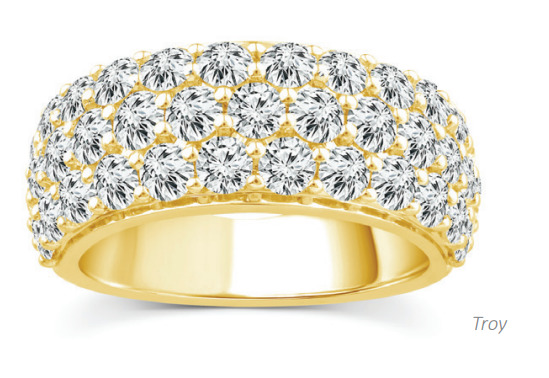
Troy is a new retail support service for independent jewellery retailers, and CEO Carson Webb agreed that LGDs are “becoming” mainstream, but are not quite there yet, mostly due to industry take up and not the consumer.
“I see many stores across Australia both chain stores and independents that are clearly testing the waters (rightly so) and dabbling in bits and pieces,” he said.
“While obviously I can’t quote any specific figures, I can certainly say that the appetite for created diamonds globally has recently outstripped the supply.”
Craig Miller is CEO of mined/labgrown diamond wholesaler JC Jewels, and he said LGDs have become a new addition to the diamond category which has created a new choice or opportunity for the consumer.
“(It’s) an opportunity to own and enjoy diamond jewellery at more affordable prices, creating a new consumer in many ways,” he said. He said the most significant area of growth is the number of retailers implementing and presenting LGDs in their offerings, a huge turnaround from where the market was at 6-12 months ago.
Another lab grown diamond wholesaler is Grown Diamonds MMDIA Pty Ltd, and director Miriam Neubauer said her team has seen a huge shift in the market in favour of lab grown diamonds, where they’re much more accepted in the industry compared to 12 months ago.
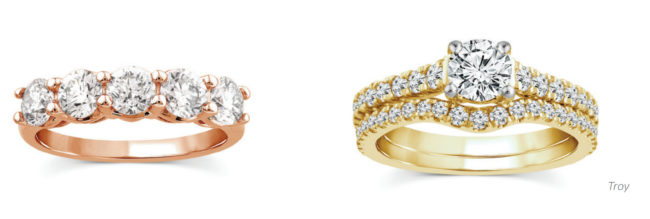
“We have seen a large number of jewellers who initially told us they would never deal in lab growns ever, have now become some of our biggest clients,” she said.
Brett Bolton from Bolton Gems said LGDs have become mainstream due to pricing, ease of availability, and the quality of stones being produced.“The market has grown exponentially in Australia over the last six to twelve months, and this curve shows no signs of mitigating but rather continuing to rise further,” he said.
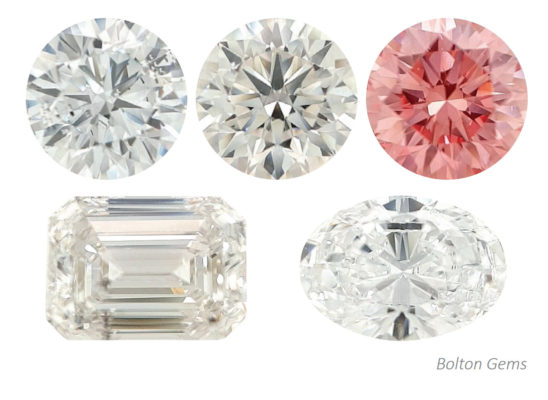
Glenyville Italian Jewellery is a Victorian-based jewellery wholesale business that has recently branched out to offer LGD and LGD jewellery to their clients. Senior sales manager Matthew Francescini said that LGDs are accelerating in popularity, and have become more affordable to everyone.
“Given the challenging market we find ourselves in at the moment, we have seen a huge amount of stable growth within the LGD market over the past 12 months,” he said.
He said there were several possible factors contributing to LGDs’ recent success, but whatever they were, it made for a positive market and industry, particularly when jewellers can demonstrate LGDs’ value for money against a mined diamond. He also lauded the GIA’s certification of LGDs, and believes this has added credibility to the stones, making them more appealing to a wider audience.
“GIA-certified LGDs provide the jeweller with a competitive advantage as they are not sold online and are much harder to come by.” It’s a similar story from the retail jewellery sector. Founder of Gold Coast-based online jewellery store and physical store My Jewellery Shop Catherine Pevy-Trewartha said that LGDs are on the way to becoming mainstream as there is greater awareness among consumers and more consumers actively seeking them out.
“We have seen double digit growth and the momentum is building,” she said.
Which diamond-making recipe is the best?
As you probably know, there are two primary methods of creating diamonds in a lab: Chemical Vapor Disposition (CVD)and High Temperature High Pressure (HTHP). When probed on what the retailers (and consequently consumers) like best, our suppliers had mixed responses. Craig said that JC Jewels has more than 40,000 certified CVD Type IIa diamonds listed on their portal, and a few thousand HTHP diamonds as well, but 98% of their sales in diamond goods 0.30 points and above are CVD Type IIa. Conversely, Brett said that they are finding most consumers are prioritising the appearance and merits of the stone as opposed to the method of its production. “Predominately we have customers looking for D/E/F colour, which leaves us to the majority of HPHT diamonds,” he said.
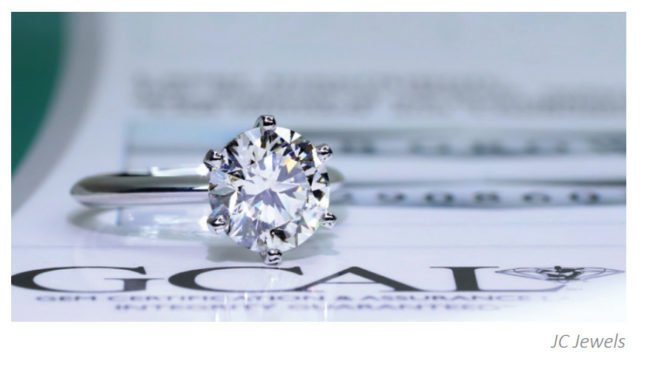
Matthew lauded modern lab created diamond methods as “nothing short of amazing” and dismissed debates about the preferred growth mechanism as a non-issue because the quality is identical to mined diamonds.
Similarly, Miriam said that 95% of their clients are happy with either method, with only a handful of clients who are picky. “At the end of the day they are both diamonds that were grown in the lab, just using a different method,” she said.
For the retail side, Catherine said that My Jewellery Shop only offers larger certified stones in CVD, with all the smaller stones being HPHT. From the retail support sector, Carson said that each method has pros and cons and that retail jewellers need to be very transparent with education, but not too technical to confuse the consumer.

“In production the CVD factories will tell you something along the lines of needing less manpower to operate the reactors and the tech is more refined in CVD,” he said. “However, there’s still the fact that many CVDs still go through HPHT postproduction treatments anyway and that virtually all the smalls are all HPHT.” He said both methods produce a beautiful product, and the cut is going to be the critical factor every time.
Lab grown/mined diamonds: all diamonds are here to stay
As shown time and time again by market research, sales figures and as reported by our respondents, LGDs perfectly complement mined diamonds in the market with neither category’s sales reducing the other’s. In Craig’s opinion, the segregation between LGD and mined diamonds is very trade-driven, so he and his team at JC Jewels prefer to look at the ‘’overall category’’ of diamonds.

“Segregating them may be a concern to mining companies but when I supply my retailers, I think of them and their clients’ best interest,” he said.
“Thus both have a place in the window, presenting them side by side, delivered with transparency and educational facts to your clients.”
He said what’s most important is that we are seeing more consumers buying diamonds than before and growing the overall awareness and
sales for the category as a whole.
Brett doesn’t believe LGDs have had significant impact on mined diamond sales because the market will support both, just as it did with cubic zirconia or the Biron emeralds in the natural emerald market. “Each of the products appeals to a different range of clientele,” he said.“In most cases one is for fashion and the other is forever.”
In contrast, Carson said LGDs could have a significant impact on natural diamond sales if retailers aren’t strategic in their retail offering. “It must be done right, a few of the major chains you’ll notice have simply gone lowest grade product replicating their mined diamond collections which to me doesn’t make any sense,” he said. “It’s all about a strategy offer, not simply more of the same.”
A greener lab created stone

Despite what some clever jewellery marketers and salespeople might say, while LGDs require significantly less manpower and energy to produce per carat than their mined counterparts, they are not carbon neutral, need enormous amounts of energy to make and cut, and so environmental considerations play a part in LGDs future.
Matthew conceded that LGDs require a lot of energy, but that it does not produce the sort of environmental impact, destruction of the earth, displacement of wildlife, and polluted waterways that mined diamonds are responsible for. He also looked to improvements in technology as a way of improving environmental outcomes for LGDs.
“As technology evolves, the energy and power that it requires to produce LGDs will be significantly reduced,” he said. “Solar power and the use of Tesla storage batteries could help with the carbon footprint.”
Craig agreed there are debates about environmental considerations between LGDs and mined diamonds, but he focused on LGD improvements in this area, pointing to key growers invested in making a positive environmental change for the future.
“I am going in the direction of offering our clients Origin Traceability, Ethical Stewardship, Climate Neutrality, Sustainable Production Practices and Sustainability Investments,” he said.
He said this will clearly reflect the attitude among those in the LGD industry towards sustainability with clear evidence. Carson said the market will inevitably produce improvements in LGD production (and thus a more environmentally friendly product) as global demand for LGDs increases.
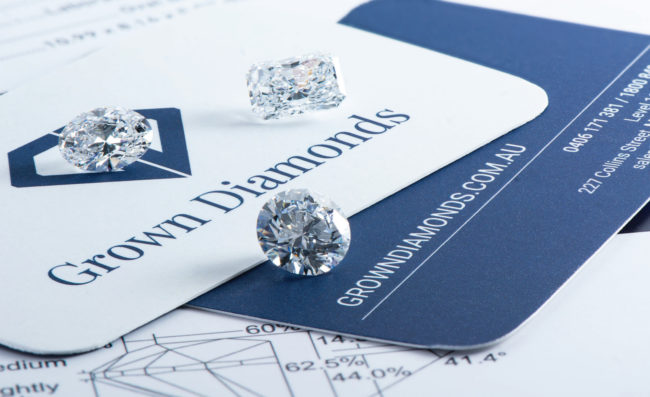
“They’ll get faster, smaller, more efficient and carbon neutral, they’ll simply have no choice and advances in technology provides these things,” he said.
When asked about whether her customers ask about environmental considerations, Catherine said most of her clients who are that way inclined have normally done some research and have made up their mind before they come to My Jewellery Shop. “We do not make any promises, we offer information and allow the client to decide what is best for them,” she said.
Leading the way with renewable energy Brett said that Bolton Gems has taken a positive approach by installing a 100kw solar system, and water tanks to produce a more sustainable future for our business.
“I implore every business to do the same, whether they’re selling lab grown diamonds or not,” he said. On a similar note, Miriam said that because LGDs are created using power attached to the grid, there are more opportunities to use sustainable energy as opposed to mined diamonds which are usually in remote areas that rely on energy that cannot be as sustainable.
“(Plus) with lab grown diamonds there is less of a carbon footprint when setting up the operation as opposed to the carbon footprint when setting up a diamond mine,” she said.

Planting the seeds for tomorrow’s lab grown diamond industry
When asked about how the LGD industry will fare in the future, most of our respondents were optimistic. Miriam expects to see all jewellery stores selling LGDs in 10 years’ time to keep up with public demand.
“Technology could possibly change for the better, making LGDs grow with better clarity and colours,” she said. In the immediate future, Brett said the current socio-economic environment made things difficult for LGDs.
“Diamonds are to be seen and worn to celebrate, so when half the country is in lockdown and discouraged or prevented from social or celebratory gatherings, the demand is affected accordingly,” he said. “I believe that when restrictions are eased, we will see a substantial sales increase in lab grown diamonds.”
In the distant future, Brett believes LGDs will not only merge in the mainstream jewellery market, but also in the technology market, so that LGDs could be used in computers and other electronics.
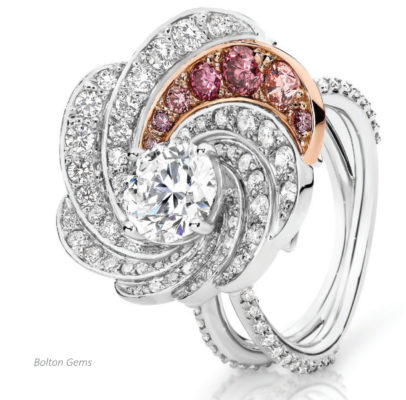
Also touching on LGD’s potential future use in science and technology, Carson said LGDs could eventually be used in quantum physics, computing and space exploration. “We can enjoy LGDs as an emotional investment for special occasions and loved ones etc however, the LGD journey has really just begun and the technology that delivers them to us will provide major advances for the human race as a whole over many years,” he said.
Matthew was uncertain as to where LGDs would be in the future, but said they there will always be a market for LGDs so long as the quality is the same as a mined diamond but without the price tag.
“With considerably more marketing and advertising campaigns the demand will only increase especially as technology improves,” he said. Catherine said she is looking forward to a very positive future for LGDs. “Our clients are embracing the beauty of LGDs, and we will continue to offer them as a part of our diamond business,” she said.